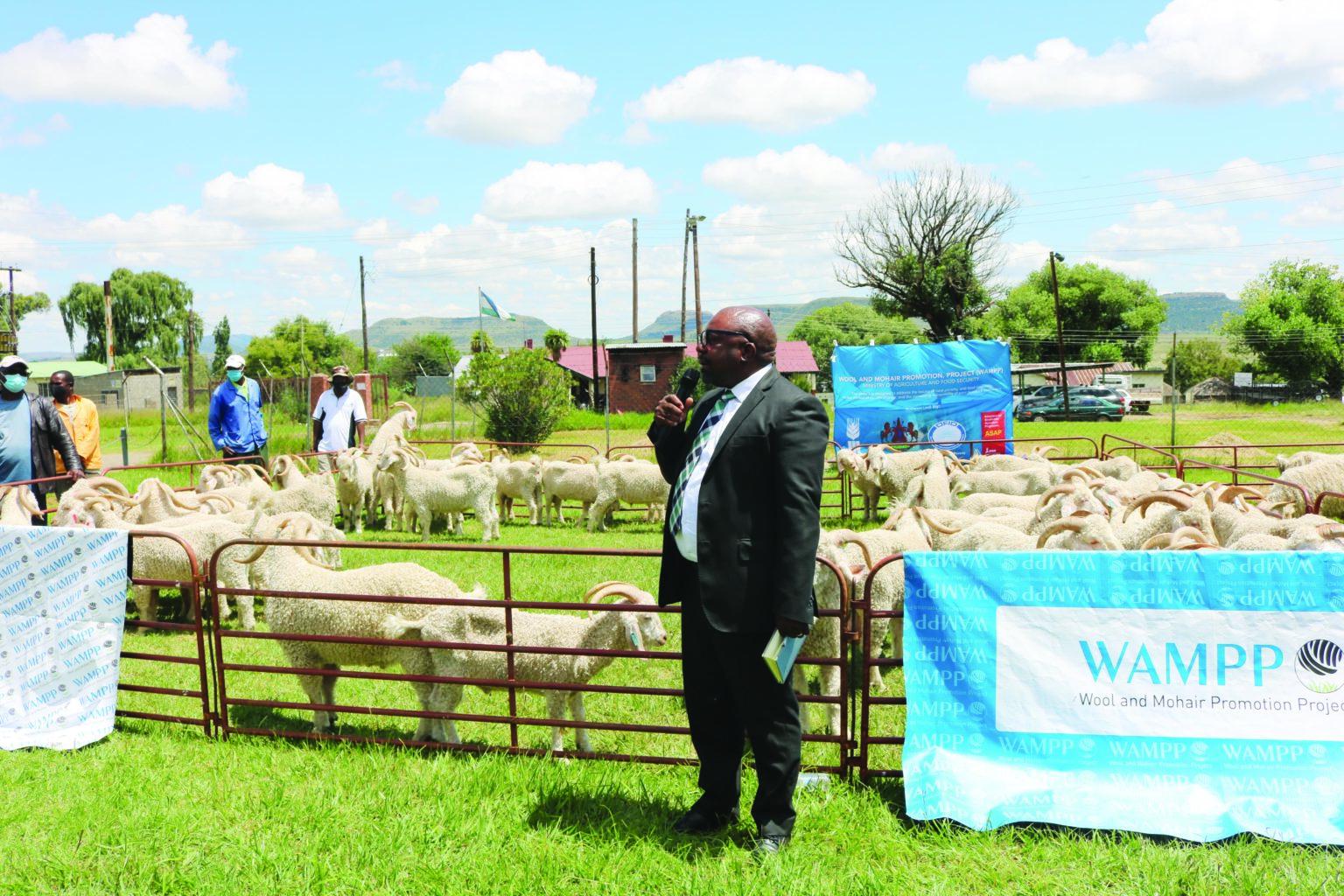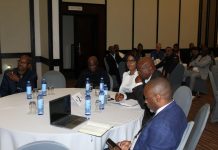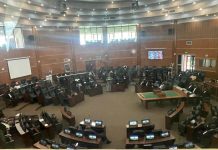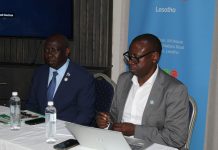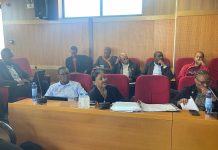Africa-Press – Lesotho. The second annual auction of Merino rams and ewes will be held at the Quthing Breeding Centre on Wednesday next week, under the auspices of the Wool and Mohair Promotion Project (WAMPP).
The auction at the breeding centre commonly known as the ‘Sheep Stud’ will see the sale of high-yield Merino rams and ewes to local farmers, meant to increase access of Basotho wool producers to improved genetics – which in turn contributes to improved production and productivity.
The first auction was held last year, where 67 animals were sold under the hammer; the highest price ram went for M16 900. This year, an estimated 130 animals (rams and ewes) will be sold.
Under WAMPP, two breeding centres, one in Quthing and another in Mokhotlong, have been transferred to the Lesotho National Wool and Mohair Growers’ Association (LNWMGA) under a twenty-year sub-lease agreement.
The two breeding centres will continue to supply Merino rams and ewes even after the project concludes in 2022. Only a fortnight ago, 77 farmers drawn from three of the country’s 10 districts received Angora bucks from the WAMPP, with M20 million set aside to improve the animals’ nutrition.
The money has been facilitated by the Fund for Agricultural Development (IFAD) under the Rural Poor Stimulus Facility to provide additional support, especially to counteract any potential negative effects on nutrition due to the COVID-19 pandemic.
WAMPP has used the M20 million funds specifically to procure lucerne, maize and sheep pellets. These are sold to farmers across the country at concessionary prices. The event, held in Maseru a fortnight ago, saw famers from Mafeteng, Butha-Buthe and Berea benefitting from the project.
This, according to the WAMPP, is in line with its Culling and Exchange Programme, under which, farmers are encouraged to exchange four low-yielding animals (sheep or goats) for one Merino ram or Angora buck.
With this programme, the project aims to assist farmers to access superior genetics, while also contributing to rangeland improvement by reducing the number of animals on this communal resource. The culled animals are sold by auction to licensed meat traders and caterers.
WAMPP’s Project Director, Retšelisitsoe Khoalenyane explained that: “This is the first group of farmers to receive Angora goats. 185 farmers from six districts have already received rams valued at M7 500 each; the project will cover the four remaining districts of Leribe, Thaba-Tseka, Quthing and Qacha’s Nek by July 2021.
Under its Livestock Production Management component, the project also assists farmers to improve animal nutrition through fodder production, ration-formulation and silage-making.
WAMPP has also supported the establishment of a revolving fund for animal feeds and veterinary drugs. WAMPP works with farmers to improve the quality and quantity of fibre produced.
In this regard, nutrition is of paramount importance. Lesotho’s rangelands are over-burdened. One of the components of the project is dedicated to improvement of rangelands as most farmers rely on these communal resources for primary feeding of their animals.
Smallholder wool-mohair producers are supported to practise supplementary feeding to ensure that their animals produce quality fibre. WAMPP is a seven-year project that will conclude in 2022.
“It is, therefore, important to also consider sustainability of project outputs. The behavioural change that the project advocates for cannot be achieved overnight.
For instance, smallholder wool-mohair producers may fail to practice supplementary feeding, partly because of economic reasons, where the input costs of production, or that of acquisition of animal feeds is beyond famers’ affordability,” a statement from the project said.
Through its interventions, the project therefore builds capacity of farmers to produce own fodder while also making it easier to afford buying the finished product, where warranted.
A total of 1 500 rams and 750 bucks will be bought under the Culling and Exchange Programme. A second round of exchanges will commence country-wide upon completion of the ongoing first round.
This programme is open to all farmers and is set to extend beyond the project life. WAMPP works with smallholder wool and mohair producers to improve the quantity and quality of these fibres that is produced in Lesotho. It is funded by the government of Lesotho, IFAD, the OPEC Fund for International Development (OFID) and the LNWMGA.
For More News And Analysis About Lesotho Follow Africa-Press

